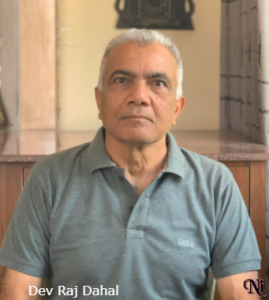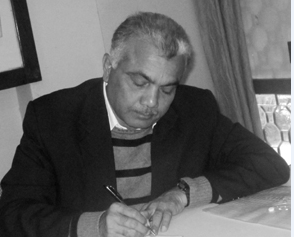Dev Raj Dahal, Kathmandu, Nepal
(Continued from last issue).
As state protection becomes fragile, powerful actors rely on force to achieve their political goals and armed actors seek societal control through kidnapping the citizens of rival groups, killings, threats, coercion, rape and violence.
Sometimes vigilante groups spontaneously emerge with a sense of revenge and act at their own will.
Theft, deception, graft and dacoit have become endemic to gain opportunities to plunder and loot.
The victims of “violence and theft lose not only what is taken from them but also the incentive to produce any goods that would be taken by others.
There is accordingly little or no production in the absence of a peaceful order” (Olson, 2001: 119-120).
Criminal groupings in rural areas have become government-free, enriched themselves and became susceptible to increasing lawlessness.
Very often, victims have to depend on informal local and family-based institutions, religious organizations and traditional groups in securing individual survival, security and livelihood and seeking conflict transformation into peace.
Human rights groups document communication of school teachers, community organizations and local citizens where rival groups are demanding that they abandon their posts under threat of death.
Such action evacuates the democratic and development space.
Deadly conflicts transform the nature, role and capacity of civil society, thus increasing individual mistrust of one another.
But, it also opens up new forms of social capital and internal coping mechanisms that provide relief, welfare and social protection.
New associations of conflict victims– widows, children, disabled, youth, orphans, mutual aid groups, charity-based institutions, etc.– in the form of civil society establish networks with local, regional and international organizations seeking critical support for their causes.
Deadly conflicts also trigger peace movements, such as civil rights, human rights, women’s rights and environmental rights and empower civil society, mobilize public opinion and create alternative structures strong enough to make actors of conflict listen to their concern, voice and action.
In a conflict zone, there is no conflict monitoring and specific law enforcement office that can handle the investigation, protection and sanctioning of human rights violations within the community.
Many conflict related cases go uninvestigated unless there is a legal request demanding further research.
Leaving hate crimes and intolerance largely undocumented and uninvestigated undermines the justice system in the future.
Due to a combination of societal pressures, however, many women and children victims of conflict and violence hesitate to file an official complaint that would expose them to public scrutiny.
As a result of funding gaps, the state system is unable to meet the accelerating demand for relief, education, social protection and rehabilitation so needed by conflict affected citizens.
Their only hope lies in non-state, civil society and humanitarian organizations as they are expected to allow the citizens to participate in the society according to their abilities.
Victims’ pressure for conflict transformation into a peace process is genuine and they learn to act as part of the global civil society. Protracted conflict has also forced citizens to invent new coping mechanisms at formal and informal institutions levels.
In the case of Nepal, National Human Rights Commission of Nepal (NHRC), UN Office of High Commissioner for Human Rights (OHCHR)-Nepal, other human rights groups and peace groups and the media have a special responsibility to minimize the violation of human rights, ensuring protection for staff and civil society activists, maintaining communication along conflict lines and contributing to peace building.
Members of a civil society require vigorous protection by state institutions as well as monitoring by nongovernmental and international organizations to ensure the preservation of their social, political, economic and social rights even as they appeal to the state and its rivals to respect humanitarian laws and Basic Operating Guidelines (BOG) for humanitarian supplies in times of complex emergency.

Strengthening the community against violence requires development of the connectors of society, bonding with local authority figures and mobilizing their interpersonal trust, communication and cooperation for conflict mediation.
In Nepal, media persons have identified their own role in reporting objectively, facilitating communication among local groups, offering solution-orientated news, discouraging anti-women news and articulating a collective voice of victim for social transformation, reconciliation and social justice.
Armed forces employ discriminatory methods to secure their own strongholds.
Through these actions, they violate the freedom from arbitrary interference in an individual’s private life, as protected in both the Universal Declaration of Human Rights and Constitutional law.
Reporting from conflict zone is especially difficult and journalists often face threat from rival groups.
Civil Society and Peace Building Peace researchers often believe that the use of reason and functioning democracy can build the architecture of peace.
Historical awareness about human condition, human nature, nature of society and the nature of international system, moral norms and institutions became a critical part of peace research.
During Cold War peace researchers visualized to create harmonious order in society by providing opportunity for nation-states to reduce military spending and reap dividends of peace.
The UN invented provisions for the pacific settlement of conflict by 18 negotiation, mediation, enquiry, conciliation, arbitration, judicial settlement, resort to regional arrangements or agencies, or peaceful means of their own choice.
It also applied preventive diplomacy to manage conflicts at an early stage before they escalate into war.
Since the end of the Cold War, the civil society has been increasingly accepted as a partner in peace building.
The concept “peace-building” was popularized by former UN Secretary General Boutros Boutros-Ghali in 1992 to identify and support structures of peace in order to avoid a descent into civil wars and seeks to stabilize the political situation.
Peace building is a process which aims towards long-term structural transformation of deadly conflict into ceasefires, peaceful relationships among the stakeholders, building democracy, social justice and enhancing cooperation.
Effective peace building requires establishing a “strategic framework of objectives for international assistance; a privileging within this framework of conflict resolution over other goals; and in relationship to that objective, setting priorities among international efforts” (Cousens, 2001:10).
There are two approaches to peace building—reconstructive peace building which has been brought to use by the UN especially in monitoring a truce, disarming and demobilizing an army, providing humanitarian assistance, strengthening participatory governance, protecting human rights and rehabilitation, reconstruction and reconciliation and transformative peace building—which seeks to address the root causes of conflict and satisfies the basic needs of the community in post-conflict societies (Evans-Kent, 2001: 2) such as security, order, identity and development.
Transformative peace building contributes to the growth of transformative leadership.
Peace-building activities are not simply about peace-keeping by military force and enforcing peace (peacemaking) but also rebuilding lives and societies after periods of deadly conflicts.
It is also about managing the contradictions at the root of conflict formation (Galtung, 1996:103) and structural violence such as domination, exploitation, repression, deprivation and humiliation.
Peace building requires the formulation of rational steps towards positive transformation so that individuals and groups can address the crisis produced by protracted conflict, devise quick response mechanisms and initiate political reconciliation for a peace system.
“Peace system is characterized by just and interdependent relationships with the capacity to find nonviolent mechanisms for expressing and handling conflict” (Lederach, 2004:84).
UN Security Council Resolution 1366 calls for “the supporting role of civil society in national level conflict prevention and peace building.”
Addressing a two-day dialogue between the UN and civil society Secretary-General Kofi Annan told the Security Council that “both local and international civil society groups had a role to play in the deliberative processes of the UN, including the Security Council, where civil conflict and complex emergencies had taken center-stage in recent years” (UN, 2004:1).
The Secretary-General’s March 2005 report “In Larger Freedom” endorsed the High Level Panel’s recommendations for the creation of a Peacebuilding Commission within the Secretariat and establishing a standing fund for it of at least $250 million to finance peace building.
In December the same year, the UN General Assembly (UNGA) and the Security Council (UNSC) announced the creation of a Peacebuilding Commission.
As a part of UNGA and UNSC this Commission will, according to Resolution 1645, generate resources to “advise and propose integrated strategies for post-conflict recovery, focusing attention of reconstruction, institution building and sustainable development in countries emerging from conflict.”
Until November 2005 the UN political and peace building missions were deployed in several parts of the world, such as Iraq, Afghanistan, Central African Republic, Great Lakes Region, Guinea-Bissau, Middle East, Somalia, Tajikistan, West Africa, Limor-Liste, Bougainville, etc.
The majority of the international agencies involved in these missions, chiefly the most leading agencies, have supported the transformation of war-shattered states into liberal market democracies (Paris, 2002:639) and ignored the existing local alternatives.
Most of the UN initiatives are still top-down. The “Global Action Agenda” of Global Partnership for the Prevention of Armed Conflict (GPPAC) has enlarged the domain of civil society in strengthening efforts to prevent violent conflict and peace building.
The European Center for Conflict Prevention (ECCP) as a part of regional initiative has organized a series of meetings on the “Role of Civil Society in the Prevention of Armed Conflicts in South Asia” and has prepared an action plan to be implemented at three levels: global, nation-state and civil society.
The UN and these regional initiatives are, however, particularly careful about enlisting the participation of local citizens in immediate, short and long-term conflict solving approaches rather than imposing models from outside. Peace building not only means the stable arrangement of power but also implies a “comprehensive learning process” (Paffenholz,2001: 535).
During a protracted insurgency it requires actors at the level of civil society like eminent persons, religious figures, political foundations, NGOs, community organizations, academics, research institutes, village elders, etc to adopt several operational strategies: respond to humanitarian crisis, organize problem solving workshops at the local level by involving rival groups to familiarize them with the root causes of conflict, improve communication among them for establishing a rule-making regime, provide orientation on peace education and promote sustainable peace-building activities based on the congruent interests of all the actors.
The proposed integrated strategies for post-conflict peace building and recovery help to ensure predictable financing for early recovery activities and sustained financial investment over the medium- to longer-term, extend the period of attention by the international community to post-conflict recovery; and develop best practices on issues that require extensive collaboration among political, military, humanitarian and development actors.
With the broadening perception on security, a collective approach of various groups within civil society has emerged for the prevention, de-escalation and mediation of various types of conflict.
The level of social development of a state determines the efficacy of civil society to foster human aspirations of peacefulness and community.
__________________
To be concluded.
Our contact email address is: editor.telegraphnepal@gmail.com

